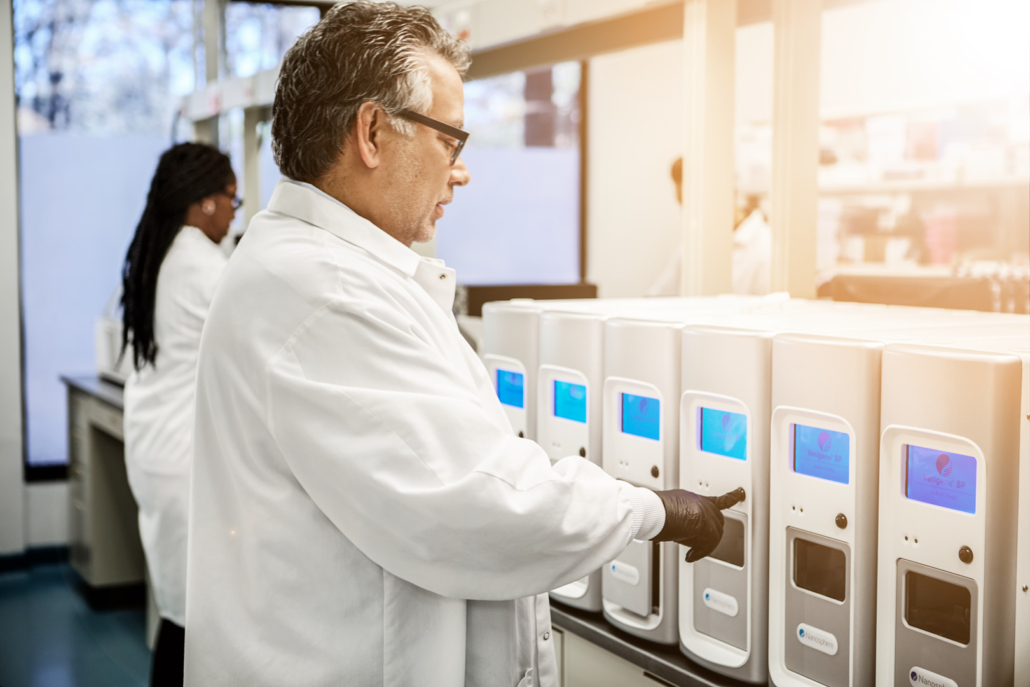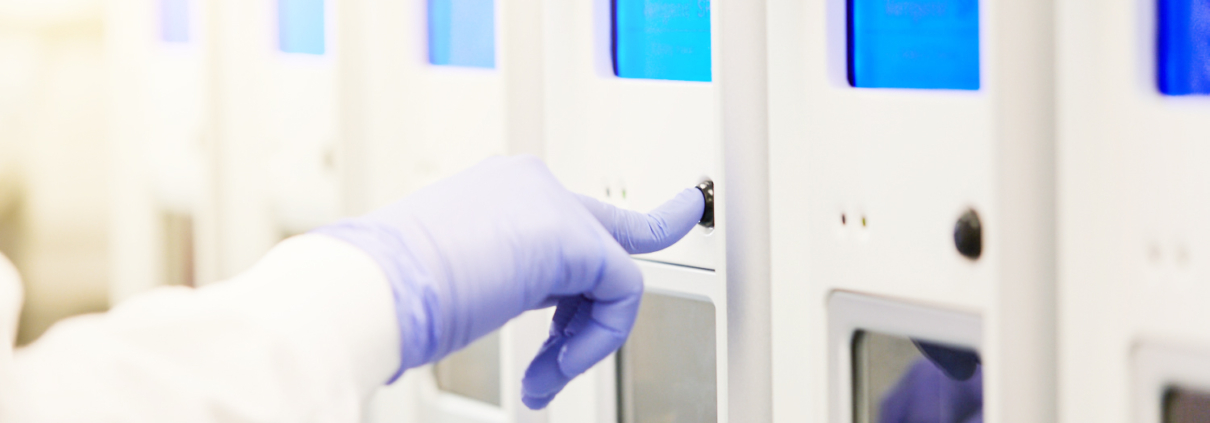Molecular Testing Offers Significant Advantages for Gastroenteritis Testing
By Rodney Sinchak, MLS(ASCP)
Incorporating norovirus detection for GI testing is key for diagnostic stewardship.
 At Cape Cod Healthcare in Massachusetts, microbiology supervisor Patricia Phelan has been using a gastroenteritis panel assay that includes norovirus for the past four years to test patients and check for potential outbreaks in the hospital and the community.
At Cape Cod Healthcare in Massachusetts, microbiology supervisor Patricia Phelan has been using a gastroenteritis panel assay that includes norovirus for the past four years to test patients and check for potential outbreaks in the hospital and the community.
Norovirus Testing: Importance and Benefits
Some labs do not routinely test for norovirus. Why? When it comes to diagnostic testing for patients with gastroenteritis, ordering physicians and clinical laboratories alike may suspect a bacterial cause based on the patient’s history, and may not always look for a virus. Because of the many overlapping manifestations of gastroenteritis, it can be difficult to distinguish between bacterial and viral causes.
While that approach is understandable, it’s also unfortunate. Learning that a patient’s gastrointestinal symptoms are caused by, say, norovirus is just as important for knowing how not to treat a patient. Positive viral results help clinicians avoid the unnecessary use of antibiotics, making these tests a key component in any diagnostic stewardship program.
Norovirus in particular is worthy of testing due to the magnitude of disease burden. In the U.S. alone, the pathogen causes 58% of foodborne illnesses and is responsible for an average of 109,000 hospitalizations and 465,000 emergency department visits each year. There are 2,500 norovirus outbreaks reported annually; these are often associated with communal settings such as cruise ships, schools, restaurants, and healthcare facilities. Outbreaks tend to peak between November and April, but norovirus infections can be acquired at any time.
According to the CDC, one in every five cases of acute gastroenteritis involving diarrhea and vomiting is triggered by norovirus. That’s a huge number of patients who might be given inappropriate antibiotics when they would do better with hydration and isolation protocols instead. Growing awareness of norovirus, as well as diagnostic stewardship mandates to use the right test for the right patient at the right time, has made it more important than ever to use diagnostic assays appropriately, delivering actionable information as quickly as possible to guide treatment and infection control measures.
VERIGENE® Enteric Pathogens Test: Enhancing Gastroenteritis Panel Testing
 This is why Diasorin includes norovirus on our molecular gastroenteritis panel, the VERIGENE® Enteric Pathogens (EP) Test. Unlike other panel tests that include an overly broad range of pathogens, our targeted test was designed to comply with GI testing guidelines established by the Infectious Diseases Society of America. It helps to promote diagnostic stewardship by avoiding over-testing and is highly adaptable in today’s reimbursement landscape. The panel covers the five most common bacteria associated with gastroenteritis, as well as shiga-toxin detection, norovirus, and rotavirus. It allows physicians to consider the patient’s journey, symptoms, travel history, and demographics and select the most appropriate test for each case. The molecular test has excellent sensitivity and specificity, making it more reliable than stool cultures.
This is why Diasorin includes norovirus on our molecular gastroenteritis panel, the VERIGENE® Enteric Pathogens (EP) Test. Unlike other panel tests that include an overly broad range of pathogens, our targeted test was designed to comply with GI testing guidelines established by the Infectious Diseases Society of America. It helps to promote diagnostic stewardship by avoiding over-testing and is highly adaptable in today’s reimbursement landscape. The panel covers the five most common bacteria associated with gastroenteritis, as well as shiga-toxin detection, norovirus, and rotavirus. It allows physicians to consider the patient’s journey, symptoms, travel history, and demographics and select the most appropriate test for each case. The molecular test has excellent sensitivity and specificity, making it more reliable than stool cultures.
These attributes appealed to Patricia Phelan in Massachusetts. She chose the VERIGENE EP test “because of the ease of use of running the test compared to plating the stool to seven different plates,” she told us, while the infectious disease physicians at her facility “have been most impressed by the 2.5-hour turnaround time.” The VERIGENE EP test allowed her team to get results faster and avoid the send-out testing they previously needed for norovirus. It was a natural fit for Phelan’s team because they had already used the VERIGENE system for the molecular testing of positive blood cultures, which had received rave reviews from infectious disease physicians within the organization. The targeted EP test was also very attractive: “Other panels we looked at had too many esoteric tests in them to be practical and cost-effective,” Phelan said.
More and more laboratories are moving to molecular diagnostics for GI testing, avoiding the many drawbacks associated with conventional stool cultures. To learn more about how the VERIGENE EP panel can make a difference for your lab, visit us here.

